Screening for Silent Spike Toxicity
Spike levels build up over time with repeated exposures and eventually the dam breaks. Here's how to detect toxicity before it causes symptoms.
This post will provide a deep dive on tests for spike toxicity, including the best screening tests for those who have no symptoms, but have been exposed. These tests detect specific spike-induced inflammation, clotting, AIDS, turbo cancer, etc, and can help get ahead of disease developing underneath the surface. In a future post I plan to cover the best tests for fine tuning a healing protocol.
There are now hundreds if not thousands of physicians treating spike toxicity with varying protocols and degrees of success.
In my experience most hesitate to escalate ivermectin enough. At high enough doses it almost always helps (at mygotodoc.com I usually start where others end, at 0.2mg/kg/day and then may gradually escalate as high as 10 times more than that ie 2mg/kg/day in some patients over the course of 5-10 weeks).
Most physicians treating spike toxicity also refrain from much or any testing.
This makes sense on a budget, and I often come across patients who can’t afford testing and we skip it as well, but if it can be afforded then it can be helpful in fine tuning the protocol and sometimes uncovering key missing ingredients, like nutritional deficiencies, or particularly stubborn micro clotting requiring escalated dosing and varied types of anticoagulants.
The other place for testing is in screening of the general population without symptoms, both vaxxed and unvaxxed (though when you really press you often do find new symptoms have sprouted up since the beginning of the pandemic).
But even in those who truly have no new symptoms and feel perfectly fine, it seems that it may simply be a matter of time before spike toxicity catches up with them, especially if, like so many people, they can’t detox quickly enough, can’t break up the atypical microclots fast enough, and then are reexposed to a new variant, or a big shedding bolus, and that tips the scales and sends them into outright long haul.
People find it hard to believe that they could feel fantastic and yet there could be something brewing inside that is just 1 straw away from breaking their backs.
Yet almost everyone was in this very situation even before the pandemic.
We all have a health span and a lifespan, and for most in the modern world the overlap between them has been dramatically shrinking for generations, and it has only gained speed with each passing year, and especially the last 3 years since the pandemic hit.
In plain English, we often gradually become chronically ill and then debilitated starting decades before we finally die. In the worst cases spending the last years of our lives in nursing homes, oblivious to our surroundings and infrequently visiting loved ones.
The reason for this is a chronic mismatch between our bodies and our environments - not just lack of exercise and poor diets, but also the chemical soup we find ourselves in, the toxins in the air, water and soil, the lack of fresh air and sunlight throughout the day, the lack of grounding, and too much toxic blue light at night that is soaked up by our eyes and very skin while we lounge in front of our screens, greatly stressing ourselves, while thinking we’re relaxing, followed by restless, unfulfilling sleep.
Most of us are drawing down on our health savings accounts - not the tax free HSA - but a metaphorical account that represents our life force.
Just like a regular bank account, if it isn’t managed properly and wealth is overused, it will eventually get close to zero, by which time we will be liable to illness at the drop of a hat - anything that is too taxing can overdraw the account since what’s flowing into it can’t overcome what’s flowing out.
And then some of us become chronically overdrawn, living on credit, and in the toxic embrace of chronic illness because of it, dragging us into the depths, while we struggle vainly to get back above the surface.
This is why when you finally realize you have to change your ways to get better, it makes no sense to give up those changes as soon as you break free of illness.
You are just above zero, still liable to dipping below the surface again. You need to build up your reserves of health over time and not overdraw your account again. You have to become a good steward of your body and resources. And over time you can get to the point where you’re on solid ground again and can put up with small and large stressors without backsliding. But you should always keep in mind how bad it can get to motivate you to stay on the straight and narrow going forward.
To get back to the topic, the spike protein builds up in our bodies over time and causes detectable changes to our immune and vascular systems. There is an immune fingerprint of various cytokine markers, there are the microclots, there are alterations to the red blood cell zeta potential, there are predictable decreases of various micronutrients. There may be early warning signs of AIDS, or cancer or organ dysfunction.
Nowadays almost all new patients with Long COVID or Vax injury made it through a few shots, or a few rounds of COVID without getting long haul, but the final infection or shot put them over the edge.
If they had come before they got that last shot or infection I could have detected their susceptibility in the lab and we could have worked to correct it.
This is the epidemic of Silent Spike Toxicity.
And these are the tests we have available to screen for it:
The Microclot Test: only available from 1 lab in the US (mail order). Detects abnormal clotting not seen on any other test. The single most specific spike toxicity test.
The Comprehensive Spike Screening Panel: includes imaging tests: EKG, CXR, Echo. Blood tests that detect damage to the heart, lungs, liver, kidneys. Checks zeta potential. Can show the immune fingerprint of spike. Detection of AIDS. Typical gut microbiome changes. Advanced cancer screening (blood & whole body MRI), and more.
The Masterjohn-Schilling Spike Healing Panel: detects neuroinflammation, free radicals, mitochondrial dysfunction, autoantibodies, reactivated viruses and bacteria, MCAS, specific micronutrients that are depleted by spike toxicity, and more.
Masterjohn’s Deep Dive Nutrition Panel goes beyond nutrients depleted by spike toxicity to provide a complete snapshot of functional nutrition and is indispensable for deep healing when half measures don’t work.
A quick note on tests in general: There is no perfect test. Tests are evaluated by their sensitivity and specificities, but we don’t have research on any of these for spike toxicity diseases. Sensitivity is how good a test is at ruling out a diagnosis and specificity is how good it is at ruling in a diagnosis.
The best screening tests would be 100% specific - meaning if you have the diagnosis it will be detected 100% of the time, but in order to gain that level of specificity they often have to cast a wide net and give up some sensitivity. What this means practically is that if the diagnosis is present you will test positive, but there will also be some people who don’t have the diagnosis who also test positive.
Highly specific tests are usually paired with confirmatory tests that are hopefully highly sensitive. Meaning they can weed out the people who were including in the first round of screening, but don’t actually have the diagnosis in question.
In the absence of research into spike toxicity diseases and optimal screening regimens we have to fall back on expert opinion.
It seems that the microclot test is likely the best screening test, because those treating spike toxicity have never come across someone with the clinical symptoms of the disease who doesn’t have elevated microclots. Unfortunately microclots can be elevated by other conditions. So a confirmatory test like the incelldx Incellkyne panel might be ordered from the Comprehensive Spike Screening panel, along with other tests we’ll discuss below.
If the diagnosis of spike toxicity is made then the Masterjohn-Schilling panel is the best next step for fine tuning the protocol, ensuring that the right micronutrients are topped up and the right treatments are prescribed.
If not improving after targeted and sustained treatment, then the Deep Dive Nutrition panel is indicated to uncover rare and unusual nutritional deficits that could be holding you back.
Here I’ll cover the primary screening tests: The Microclot Test and the Comprehensive Spike Screening Panel. In a future article I may cover the more expansive and complicated panels that are used primarily in treatment.
The Microclot Test
Typical microclots are usually found in the elderly and those with chronic illnesses like diabetes.
Spike induced atypical amyloid fibrin microclots are found in those with spike induced blood toxicity.
The difference between typical and atypical are that spike induced microclots are very difficult to break down, so difficult that they often do not break down at all.
This explains why the D-dimer isn’t helpful for detecting spike toxicity.
D-dimer is always trapped inside of clots. Typical clots are always being broken down on the margins - at the edge of a typical clot there will be breakdown. Sometimes the breakdown happens slower than the growth of the clot, but there is always a battle going on between clot growth and clot destruction which will release D-dimer into the blood stream.
Since it is virtually always elevated in the presence of clotting it is a very specific test, and is used as a screening test when a physician suspects a clotting disorder, but isn’t sure. For example if someone shows up with chest pain and it could be a pulled muscle or a pulmonary embolism (clot in the pulmonary veins), a D-dimer is a simple ad very cheap test that can be done to determine if further confirmatory, but more expensive more risky testing should be considered, like a CT Angiogram of the chest.
For this reason every doctor going through residency comes to consider a positive D-dimer as indicative of clotting and a negative D-dimer as indicative of no clotting.
The D-dimer is often elevated during severe acute COVID-19 infection, and during a severe acute injection reaction, but it is not usually elevated in chronic spike toxicity, including chronic long haul and vaccine injured patients.
The reason it isn’t elevated is that most people cannot break down the atypical microclots caused by spike protein without some additional help from medications and supplements.
Once medications like aspirin (and sometimes prescriptions ones like plavix and eliquis), supplements like nattokinase, serrapeptase, lumbrokinase, bromelain and NAC are started the atypical microclots start to be broken down and D-dimer goes up, which in this case is usually reason for celebration.
So the microclot test is the only test in America today that can detect elevated atypical microclots. It’s only available from one lab in the country via mail order (request it from mygotodoc.com), and it helps detect spike toxicity as well as helping track treatment.
If initial treatment for microclots with aspirin and supplements doesn’t bring the levels down then we escalate to using higher doses, or add plavix and then later eliquis. And we can also consider plasma donation, or even therapeutic plasmapheresis, if available.
The Comprehensive Spike Screening Panel
This set of tests includes an EKG, CXR, Echo. It includes blood tests to screen for daamage to the major organs including the heart, lungs, liver, and kidneys. It checks for zeta potential in the blood, which is affected by spike toxicity. It detects an immune fingerprint of spike. It can detect AIDS. It covers stool testing for the gut microbiome as well as advanced cancer screening (via blood & whole body MRI), and more.
Tests Included in the Panel:
Spike antibody test: Measures your B cell’s response to the spike protein. In the absence of a direct test for spike protein this helps indirectly detect and track the spike protein levels in your body. Your body produces antibodies in response to the spike protein, and this test measures those antibodies. Generally speaking the more spike protein in your body, the higher the antibody levels. However, what's considered a problematic level varies by individual. The goal is to lower this level as much as possible. The test can also help detect those individuals who might be transmitting the spike protein to others. This is by no means a perfect test, but in the right setting it is helpful as a red flag for further workup, or as a way of monitoring response to therapies over time.
Incellkyne Panel from Incelldx - provides an immune fingerprint of spike protein, a combination of elevated cytokine markers that are typically seen in spike protein disease. There are other immune fingerprints they have identified on this same test that indicate non spike Chronic Fatigue Syndrome and Lyme disease. If CCL-5/RANTES and/or VEGF are elevated (VEGF is almost always elevated) then the medication Maraviroc can be helpful. VEGF indicates vascular inflammation and omega-3s, infrared light exposure, and a number of other approaches can be particularly helpful to deal with that. Other inflammatory markers tested are TNF-alpha, IL-2, IL-4, IL-6, IL-8, IL-10, IL-13, GM-CSF, SCD40L, CCL3, CCL-4, and IFN-Gamma. Ivermectin is known to decrease IL-6, which is commonly elevated in Long Haul and Vax injury.
Lymphocyte Subset Panel or Cyrex Lymphocyte MAP:
The subset panel is the standard test for AIDS and tests for these immune subsets: CD3, CD19,CD20, CD4, CD8, CD56+. The primary pathognomic feature of AIDS would be a CD4 T cell count lower than 200, though there are other red flags such as NK cell activity <10%, or a deficit of T helper cells (CD4+), as well as these others that would only be found on the Cyrex Lymphocyte MAP test: TH1 insufficiency, Increased T-Reg (CD4+ CD25+), deficits of cytotoxic cells (CD8+, CD56+), increased TGF-beta, etc. The Lymphocyte subset panel is cheaper and available at any standard lab and may be covered by insurance, the Cyrex test is more expensive and is a mail order blood test only that has to be paid in cash up front. The Cyrex test can detect 14 different immunotypes and reveal immune under or overactivity, infections, inflammation, autoimmunity, allergies, asthma, hypersentivities and some cancers. It also helps determine what further immune tests can be done to fine tune a healing protocol.
Galleri Cancer Screening is an advanced test for 50+ types of common cancers based on a genetic marker found in the blood. It is a good screening test because it is 99.5% specific. This might be a good option for someone with a family or personal history of cancer as it can detect occurance at a the earliest microscopic stage, far before any visual test like an MRI or CT scan would show a mass. If cancer is found ivermectin, fenbendazole, vitamin C, baking soda and many other of label easily available substances are very promising for treatment.
Can 2 Cheap Meds, 1 Vitamin & Baking Soda Kill Any Cancer?
·Cancer rates have skyrocketed in the past century for a number of reasons not least of which is the incredibly large number of toxins spewed into the environment and incorporated into our food supplies. And now with most of humanity exposed to the cancerous spike protein there is likely to be even further acceleration. Those exposed to the fallout from …
Complete Blood Count (CBC)
Measures various components and features of the blood, including red blood cells, white blood cells, and platelets. Amongst the white blood cells we can see various abnormalities - they can be high or low, and subsets like basophils, neutrophils and eosinophils might be off. For example a patient started aspirin which is a cornerstone of most treatments of spike toxicity, but in this case raised the eosinophil level and caused some histaminergic symptoms. The symptoms were the same as her usual disease symptoms so initially were written off as a normal fluctuation in symptomatology over time, but in light of the elevated eosinophil level we finally determined that the aspirin was triggering a problem, since that is possible side effect of aspirin. Once off aspirin the symptoms and the eosinophils normalized.
Comprehensive Metabolic Panel (CMP)
Measures 14 different substances in the blood. It provides information about kidney and liver function, electrolyte levels, and blood sugar. Blood sugar can be high or low in spike toxicity, and that would indicate a pancreatic issue requiring further workup. Liver function often needs to be tracked in those on ivermectin and many other medications. Potassium balances sodium and usually needs to be supplemented in long haul, since most people don’t get enough, especially if blood pressure is rising.
Cystatin C is a more specific marker of kidney dysfunction than the creatinine level that is included on the CMP.
D-dimer: as mentioned earlier this is a product of the breakdown of clots, it’s often elevated in the acute phase of spike injury or disease, but over time the microclots being inherently difficult to break down stop releasing D-dimer unless the patient is taking a combination of supplements and/or medications to trigger this.
Erythrocyte Sedimentation Rate (ESR)
Measures the rate at which red blood cells settle in a standardized tube over one hour. It is a nonspecific marker of inflammation in the body. It is also an indication of the zeta potential, which is a measure of the normal negative charge on red cells that prevents them from clumping together. Spike protein lowers the normal zeta potential which usually causes ESR to rise. Potassium citrate can help reverse this trend, as can sunlight and grounding.
hs-CRP Test (C-Reactive Protein High-Sensitivity) is another non specific marker of inflammation in the body and if found require further workup. It can be elevated in myo-pericarditis.
Troponin T is a protein relatively specific to heart muscle cells, leaked into the blood. This is a cardiac biomarker that indicates myocardial injury and along with an EKG is. one of the primary screening tests for a heart attack as well as for myocarditis/pericarditis.
Pro BNP (N-terminal pro-brain natriuretic peptide) is produced by the heart in response to strain, particularly heart failure.
Electrocardiogram (EKG)
Non-invasive medical test that records the heart's electrical activity. Can be used to diagnose myocarditis/pericarditis, heart attack, and various rhythm abnormalities like atrial fibrillation, SVTs and more that can raise the risk of sudden cardiac arrest, such as that seen in some athletes who have been vaxxed.
Echocardiogram (ECHO)
Provides valuable information about the heart's structure, function, and blood flow and is an important test for helping visualize the inflammatory changes of myocarditis-pericarditis, such as fluid leaking into the sack around the heart.
Chest X-ray
Non-invasive imaging test that uses X-rays to visualize the structures and organs within the chest, including the lungs, heart, ribs, diaphragm, and large arteries. Anyone with shortness of breath should have a Chest Xray as a first screening test looking for pneumonia, inflammation, scarring, nodules/cancer, etc.
Whole Body MRI
Another imaging modality that can turn up hidden cancers and a whole host of other abnormalities and might be ordered for someone where the Galleri test was negative but there was still some suspicion present (here is always the risk of over diagnosis with imaging tests like this, which can lead to otherwise unnecessary stress and procedures that can themselves cause harm).
Microbiome testing: Microbiomix Metagenomic Sequencing of Stool by Genova or Sabine Hazan’s Whole Genome Deep Sequencing by Progenabiome. Spike toxicity leads to depletion of beneficial gut bacterials species such as Bifidobacterium pseudocatenulatum, Faecalibacterium prausnitzii, Roseburia inulinivorans, and Roseburia hominis all of which are associated with long COVID complications. Presence of 'unfriendly' bacterial species is linked to poor performance on the 6-minute walk test among long COVID patients. Microbiomix is cheaper because it uses a less thorough sequencing technique, but can show some changes found due to spike toxicity. Sabine Hazan’s test is better if budgeting allows, both because it does a whole genome sequencing, but also because it benefits from her proprietary and private knowledge base (essentially studies and findings that have not yet been published). There are some supplements that can help correct deficits, and in stubborn cases a stool transplant can be transformative, though this is somewhat difficult to get done as it usually requires travel.
And that’s a wrap!
Next time We’ll look at the Masterjohn-Schilling panel which is our go to for optimizing treatment of long haul/vax injury and perhaps the Comprehensive Nutrition panel, which is important for anyone who has a chronic illness resistant to treatment, including long haul syndromes.



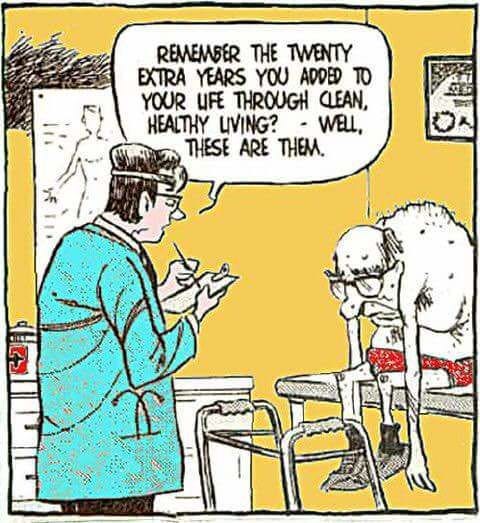


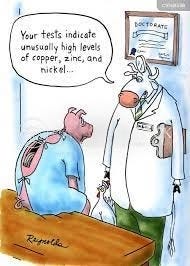


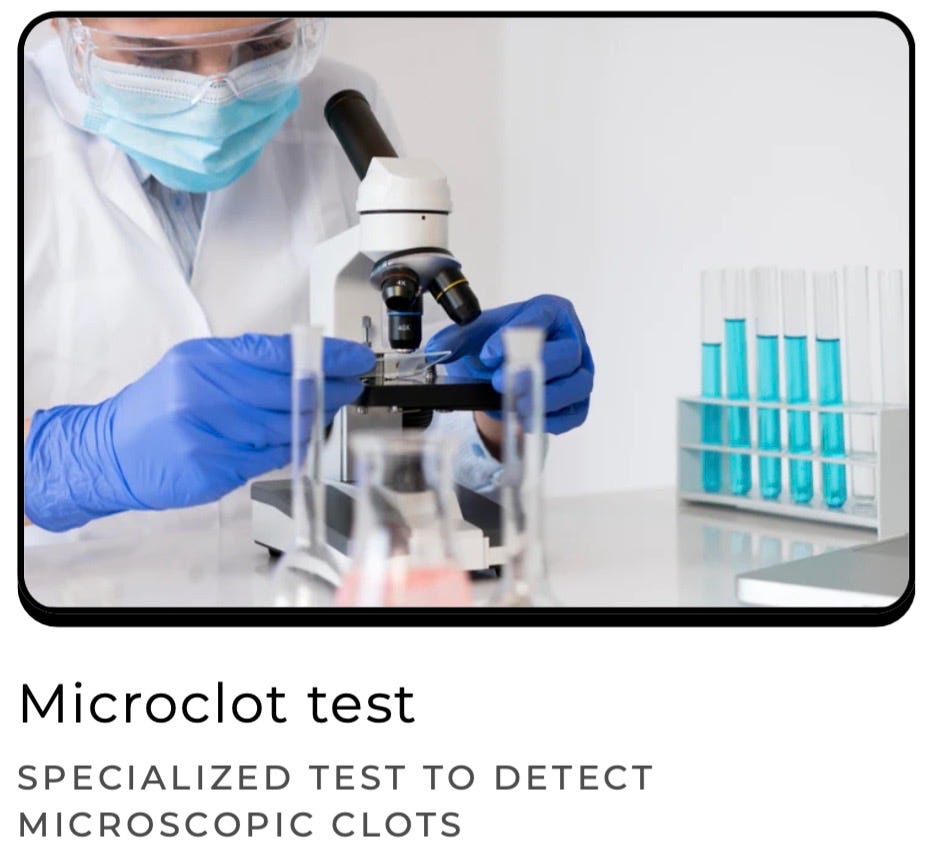

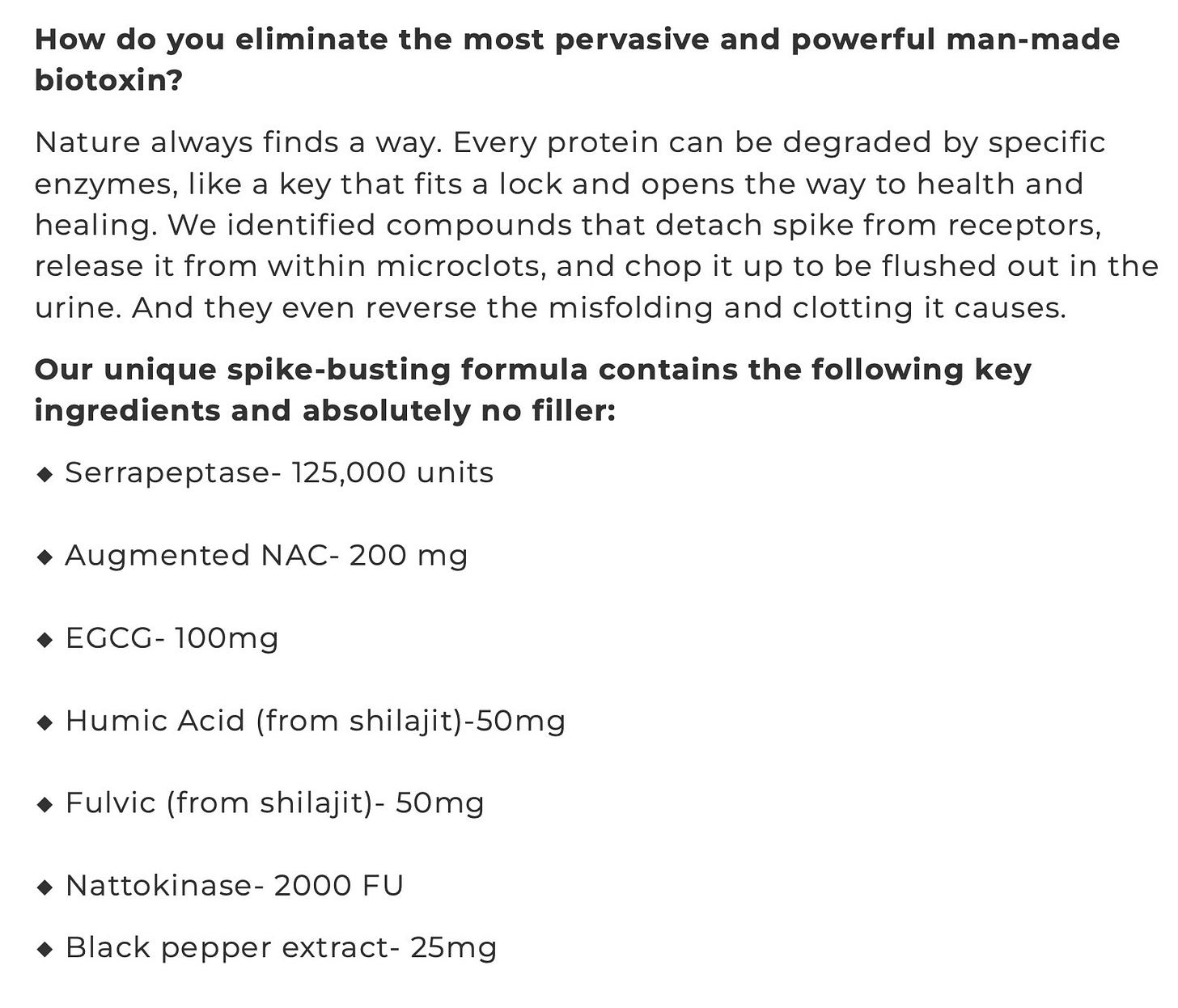
![DETOX [spike buster] PRE-ORDER NOW: initial stock is limited! Shipping late November 2023. DETOX [spike buster] PRE-ORDER NOW: initial stock is limited! Shipping late November 2023.](https://substackcdn.com/image/fetch/$s_!QZn8!,w_1456,c_limit,f_auto,q_auto:good,fl_progressive:steep/https%3A%2F%2Fsubstack-post-media.s3.amazonaws.com%2Fpublic%2Fimages%2F9492b648-e9c1-46a0-8b73-5da3807b12af_1445x1445.jpeg)

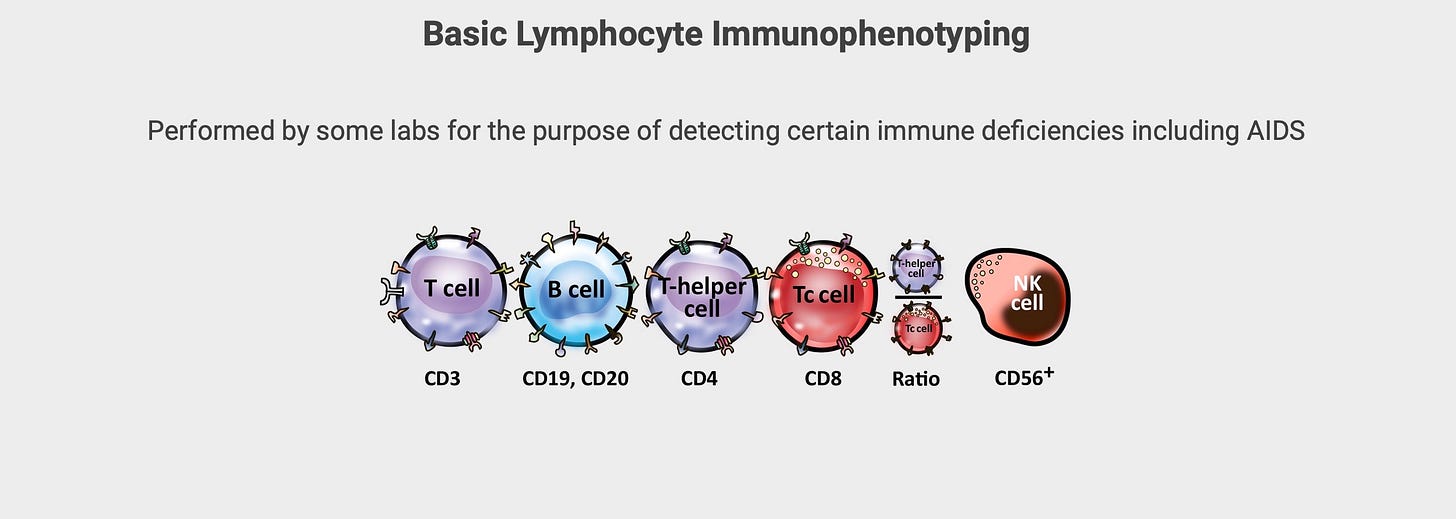
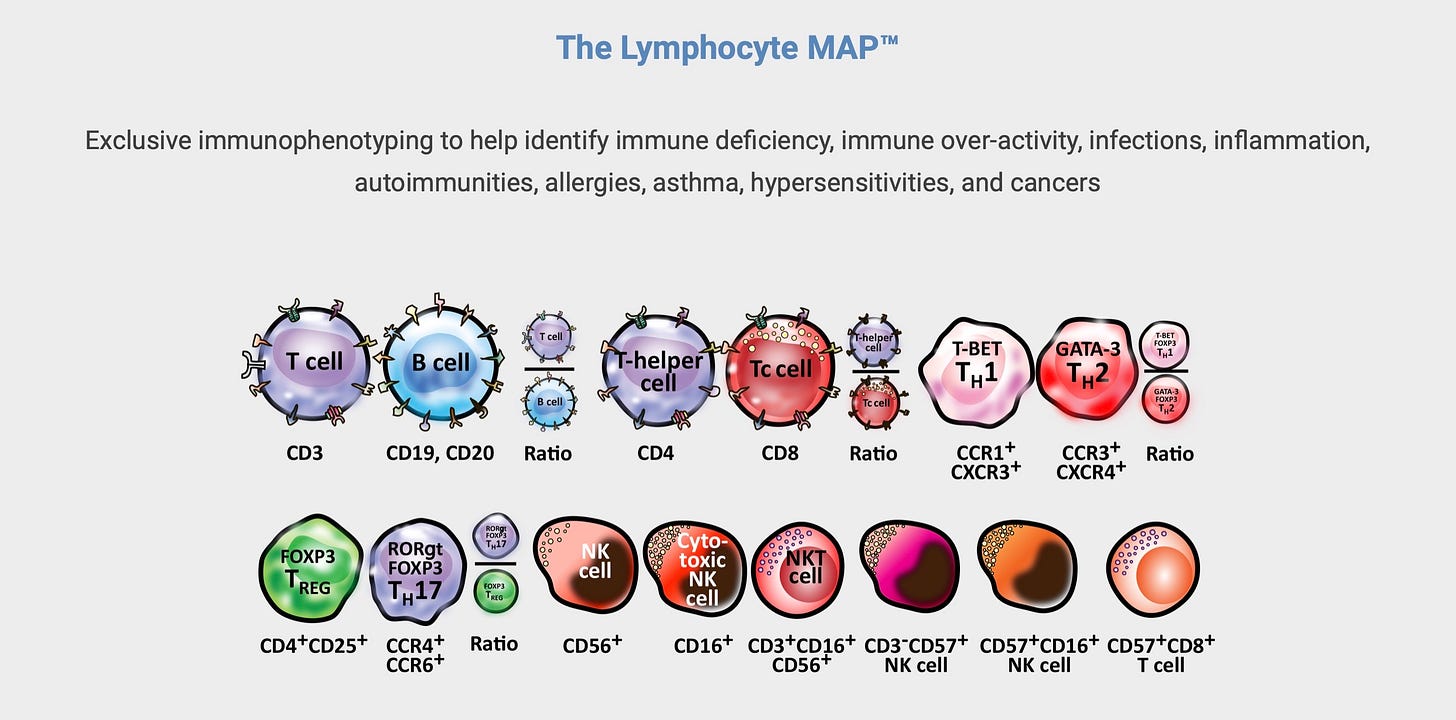

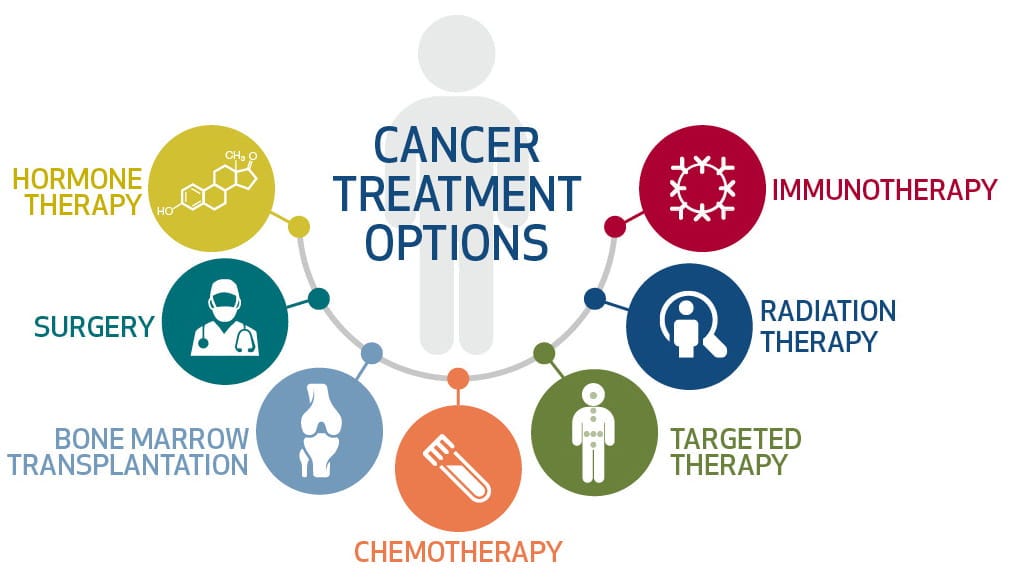

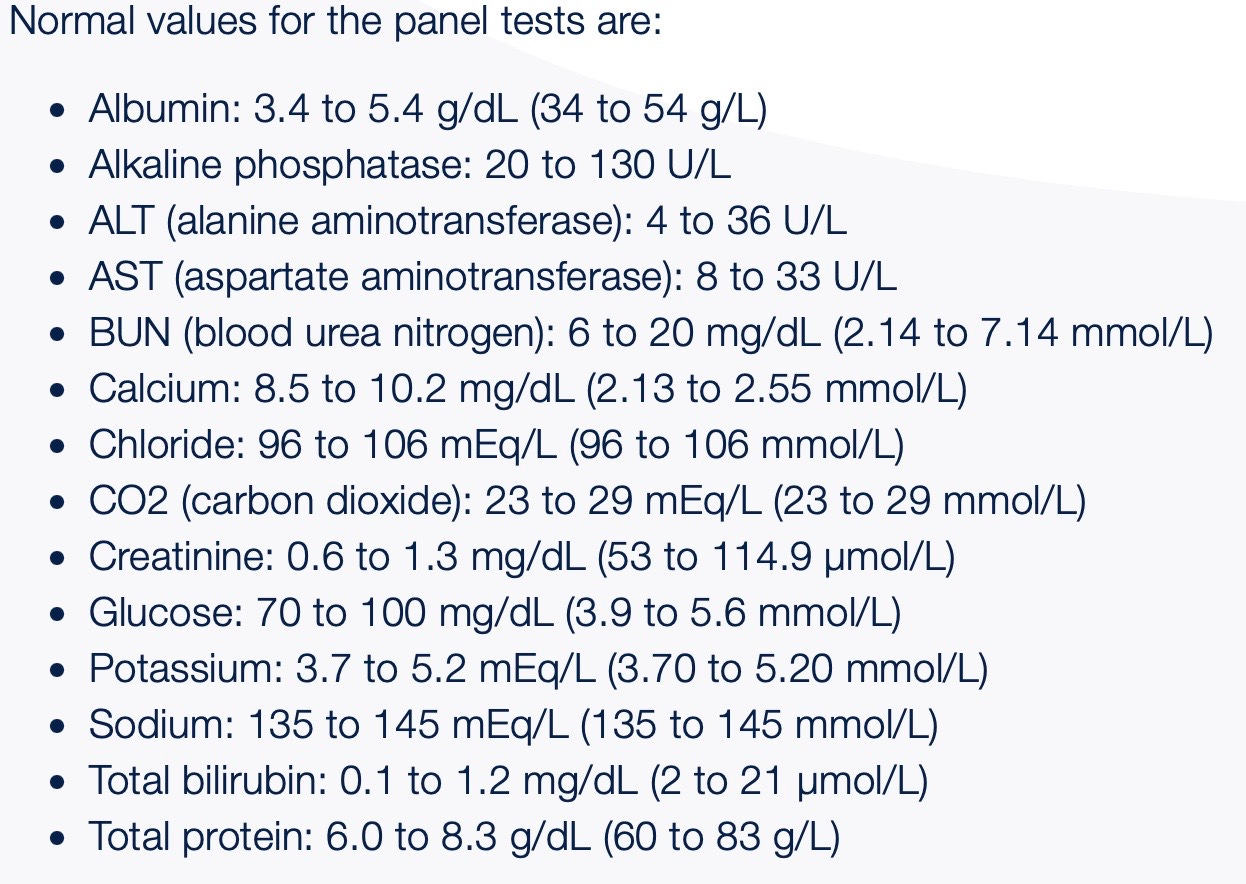

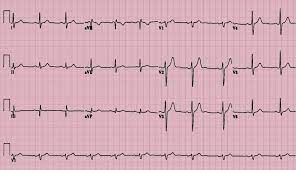

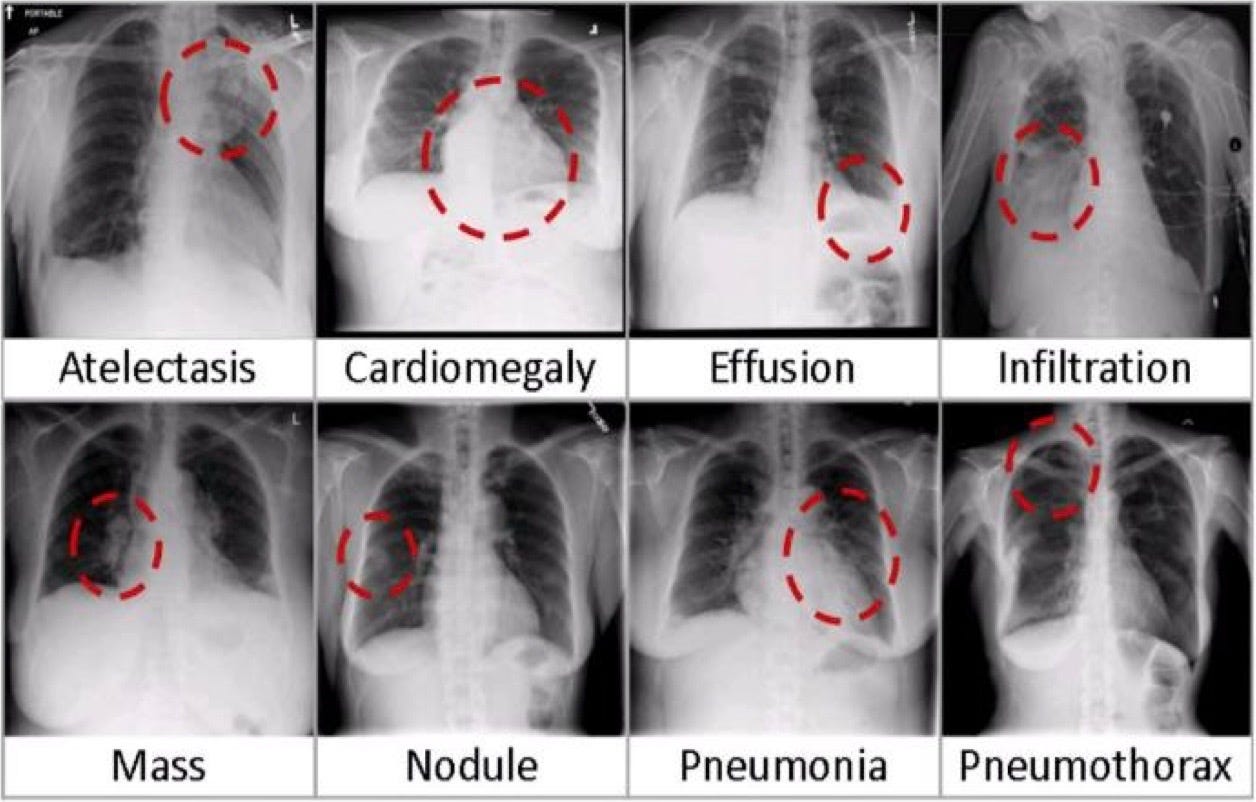
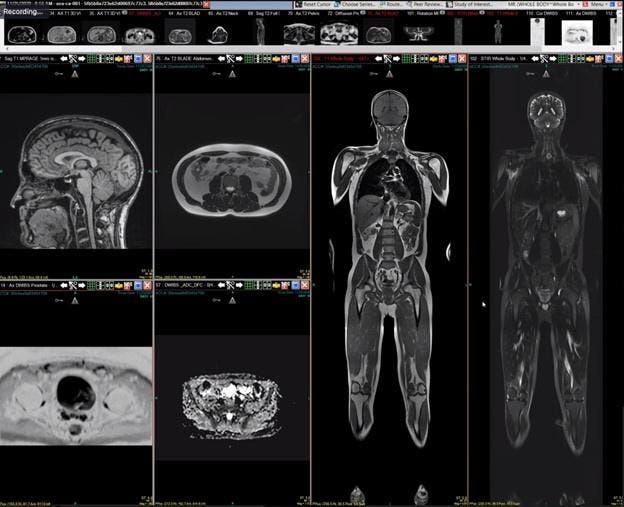
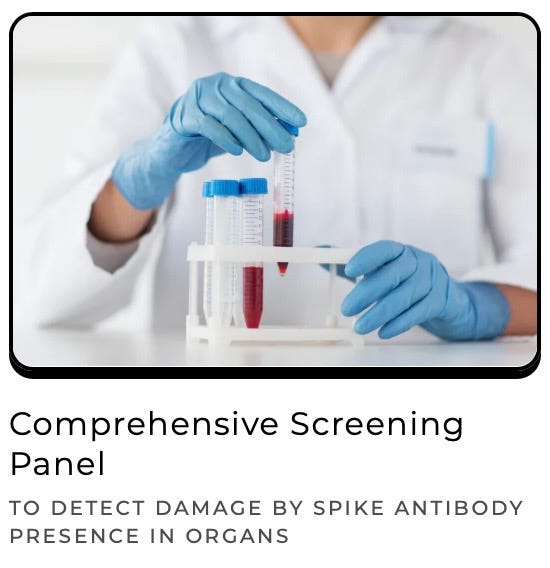

sad to say the allopathic medical profession has been under the spell of pharmakeia for hundreds of years and remains terminally tainted
There are no spikes. Your tests are phony and anti-scientific. You don't know the first thing about biological health. No illness or disease has ever been contagious. You apparently don't know how to scrutinize the Methodology of any "scientific" paper related to health. I doubt you have ever tried. You simply accept what you've been indoctrinated to believe and you have the gall to think that is virtuous.